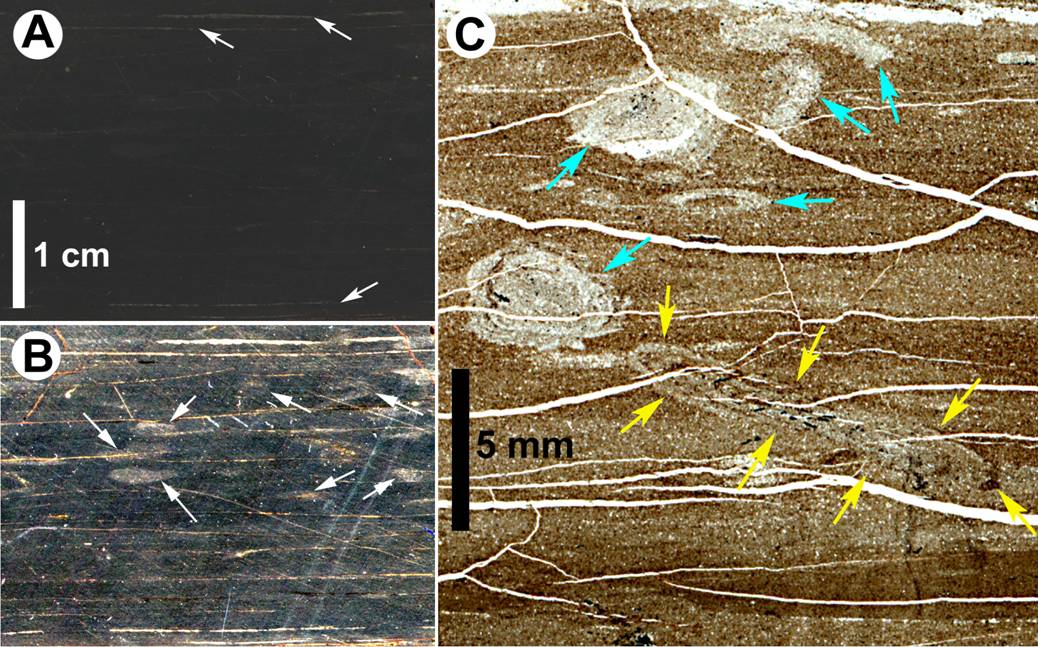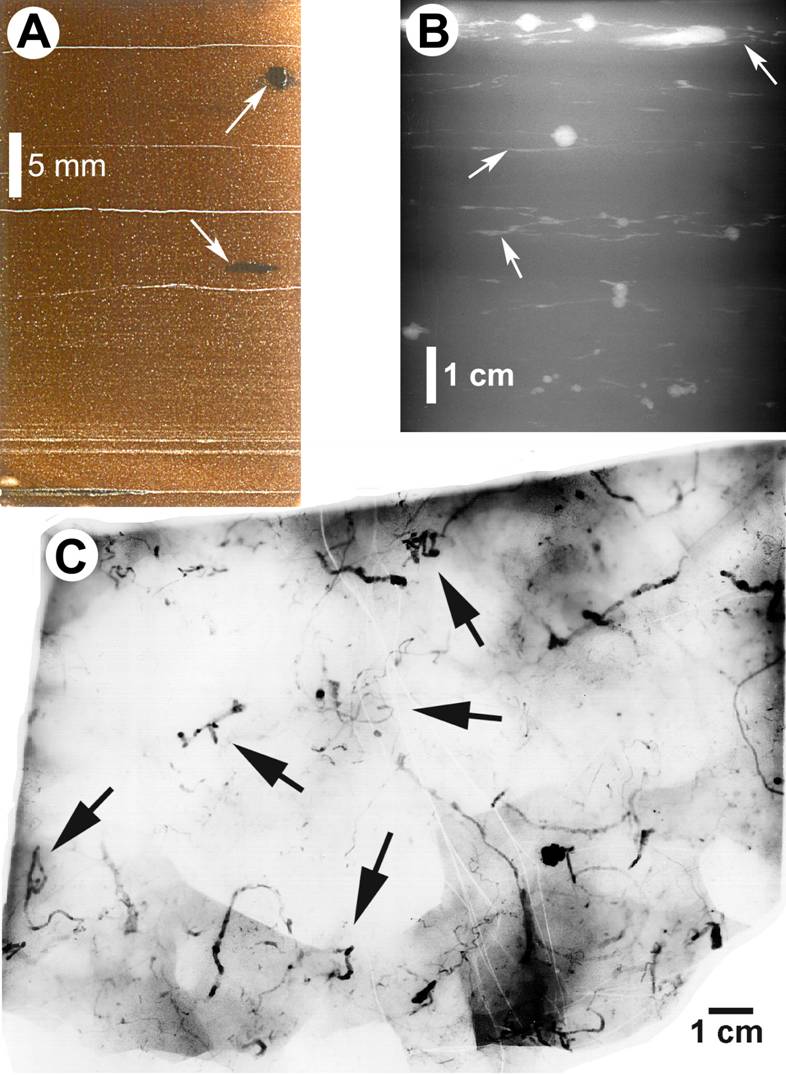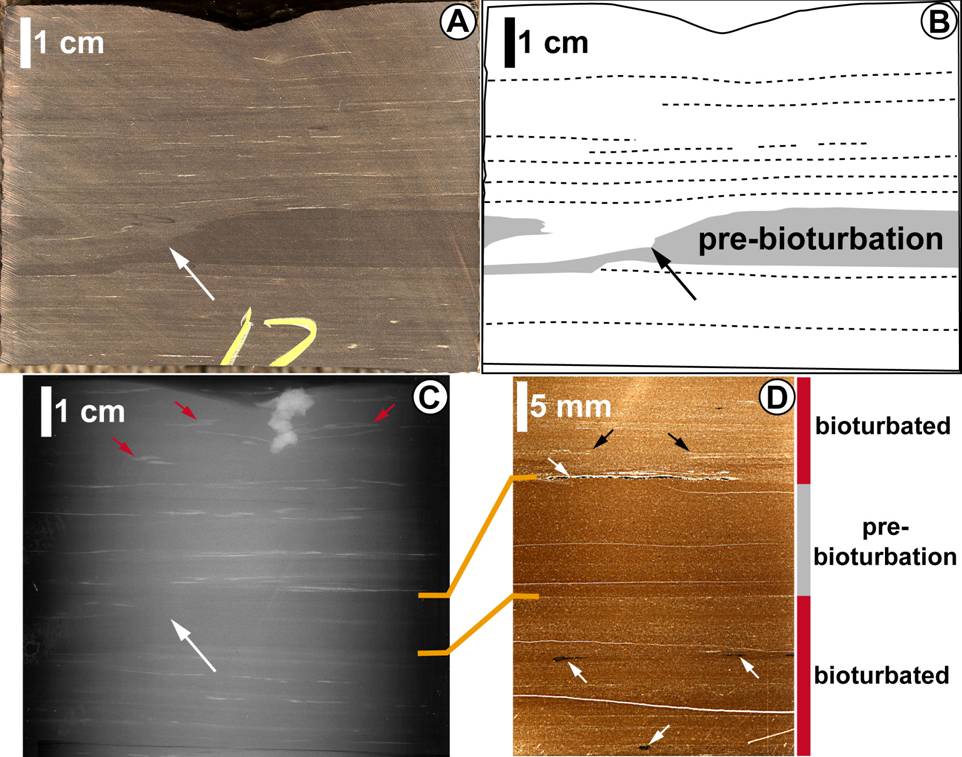Reference for above:
Lobza, V., and Schieber, J., 1999, Biogenic sedimentary structures produced by worms in soupy, soft muds: Observations from the Chattanooga Shale (Upper Devonian) and experiments. Journal of Sedimentary Research, v. 69, p. 1041-1049. download PDF file (left click on link and click on "Save as"...)
Even more subtle evidence of bioturbation is seen in the following image set. In absence of lithologic contrast (gray-black) that allows sediment swimmer traces to be preserved, precipitation of diagenetic minerals can also preserve the activities of burrowing worms. The pyritic traces below may have formed when iron oxides formed initially along the walls of thin aerated burrows. Upon further burial these initial iron oxides were replaced by pyrite because of overall reducing pore waters. X-radiography reveals these traces in an otherwise solidly black shale.
(A) Thin section of faintly laminated black shale with mm-scale round-elliptical pyrite concretions (arrows). Sample is from New Albany Shale in Indiana.
(B) X-radiograph from same sample (note change in scale, view perpendicular to bedding). The laminae do not have enough contrast to show up, only pyritic structures produce sufficient contrast. We see irregular pyritic trails that move obliquely through the sediment (examples pointed out by arrows). The bright spots are localized pyrite accumulations that nucleated on these trails.
(C) X-radiograph from a slab of comparable lithology in Chattanooga Shale of Tennessee (view perpendicular to bedding). We see pyritic trails with erratic and sharp turns. Intensity varies because pyritization is not uniform along trail.







